


 |  |  | 9.1 Introduction |
In many aquatic ecosystems not influenced by Man, Harmful Algal Blooms including those of cyanobacteria, are normal phenomena. However, blooms of algae causing detrimental effects on aquatic ecosystems, such as water discoloration, health problems due to intoxicated fish, shellfish etc. as well as direct toxicity to fauna, including fish kills and human fatalities (the latter due to consumption of microalgal toxins accumulated in shellfish) are for sure a disturbance for the aquatic ecosystems where they occur [112][445][270][189]; see Figures 1, 2, 3, 4.
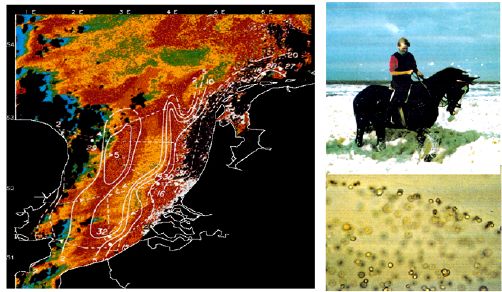
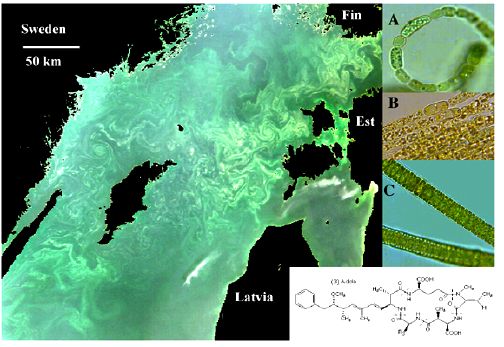
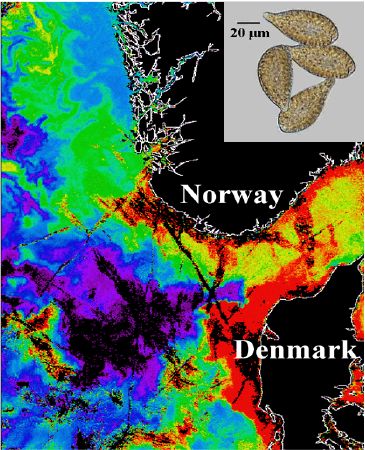
An indirect effect of some Harmful Algal Blooms is oxygen deficiency in deep waters and, as a consequence, mass mortality of benthic animals and fish kills [188]. These kind of algal blooms for simplicity of expression are called HABs = Harmful Algal Blooms.

Although as stated above many HABs with disastrous consequence for the marine environment do occur naturally, evidence is gathering that they have increased in number, areal distribution and biomass per unit water surface or volume during the last decades (see e.g. [186][8][275][208]; Figure 5).
This is certainly true for many marine coastal areas and semi/enclosed seas, where the influence of Man on water quality can be substantial. From long term data only in the Baltic Sea it has been possible to corroborate the assumption that the increase of HABs is to a great extent connected to the increased input of nitrogen and phosphorus to these waters. Sediment cores from anoxic zones in the Baltic Sea, shows that some of these HAB species existed already 7000 years ago, however it is only after 1963 that there is a dramatically increase in the algal biomass [377][154]; see Figures 6, 7.
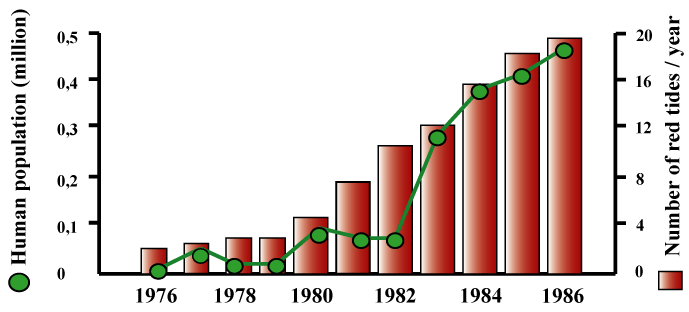
This is a direct consequence of the increased input of mostly N to these waters after the 1940s due to artificial agriculture fertilizers. Thus it took a delay of about 20 years between the input of nitrogen to be expressed in the increase in these algal biomass. For other parts of the world, although not possible to show with certainty an increase in harmful algal blooms occurrence, it has been shown that by reversing eutrophication the number of harmful algae can decrease. This is the case for the very eutrophied Seto Inland Sea, Japan, where the number of HAB have continuously decreased in numbers to 50% since the discharge of industrial and domestic effluents to these coastal waters have decreased (from about 300 to 150 blooms/year) [350].

The most damaging HABs are those caused by toxin-producing algal species. The number of species that normally or perhaps only under specific environmental conditions, contain toxins is quite low ( approx 100). Toxins produced by HAB can be transferred within aquatic food chains. While information on zooplankton feeding or avoidance for some HAB cells exists [471], the scattered and species-specific results do not yet allow for generalisations, as HAB species vary greatly in their morphology, nutritional/toxin content and nature of toxins. Recent experimental and field data indicate that HAB toxins can accumulate through vectorial transfer in marine food chains [306]. It is also well known that some HAB toxins accumulate in commercially important shellfish [308] and can contaminate humans.
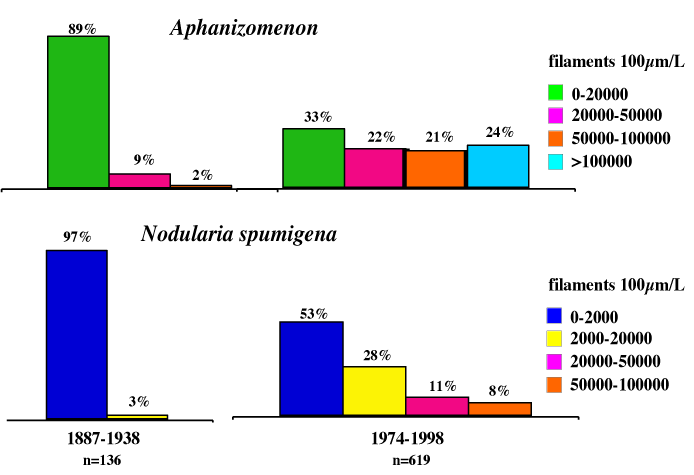
Toxic phytoplankton species have been known for more than a century. However, in recent years more and more species able to produce toxins have been detected, and new toxins have been chemically characterized [503]. All these mentioned processes are furthermore connected to the intracellular chemical composition of HAB cells and most of all, their toxin content, which varies depending on the N and P concentrations in the water. Intracellular toxin content in HAB species has been shown to increase when the cells grow under nitrogen and/or phosphorus unbalanced conditions (in relation to their optimum) [141][252][156]. For the ichtyotoxic species, when these species are either nitrogen or phosphorus deficient, the limiting nutrient (N or P) will be in very low concentrations inside the cells while the surplus nutrient will be in excess [252].
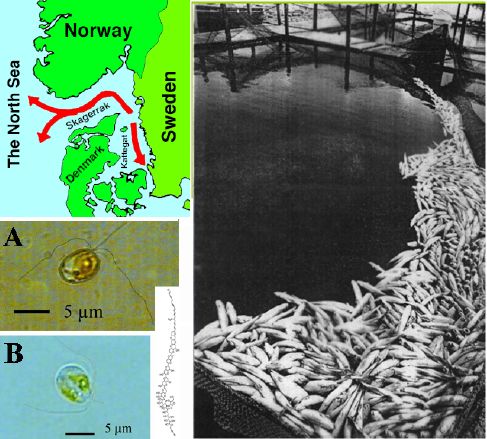
Consequently the intracellular N/P ratios will then vary broadly. A strong relation can be found between the intracellular N/P ratios and the respective toxin concentrations i.e., toxin increases when the cells are more N and or P limited (low and high N/P ratios). For the organisms producing toxins accumulating in the food chain, only under P limitation (excess of nitrogen) there is an increase in toxin production. The reason seems to be that under stress, e.g. lack of an essential nutrient to grow, the HAB cells by producing higher amounts of toxins are able to deter grazers more effectively [252][212][238] and by releasing greater amount of allelopathic substances will kill other phytoplankton species competing for the same scarse limiting nutrient [192][243]. For the ichtyotoxic species, the higher toxicity under N or P limitation can be explained by the fact that the molecular structure of these toxins are made of C, O and H, thus there is no need of N or P to synthetise these compounds. For the HAB producing toxins accumulating in the food chain, higher toxicity is only found under P-limitation as these toxins (besides, C, O and H) also need nitrogen in these molecules. Unbalanced N and P conditions are often recurrent in marine waters due to the increase in anthropogenic discharges of N and P to these waters. Thus, it is possible that even if HABs have not increased in size, the deleterious effect of these blooms on the ecosystems is stronger nowadays since toxin levels in the cells are higher.

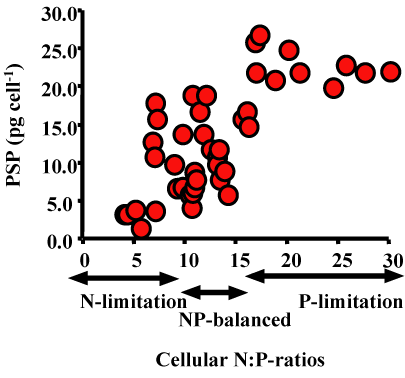
 |  |  | 9.1 Introduction |